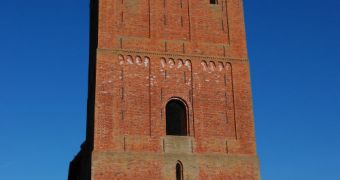Early Chinese and English astronomers may have been the first to observe sunspots, but the first scientific publication detailing them has just reached the age of 400 years. It was written by a German medical student named Johannes Fabricius.
He began conducting studies of the Sun in March 1611, and observed the first sunspots in his life on the 9th. Several months later, he published his discoveries in a study called De Maculis in Sole observatis et Apparente earum cum Sole Conversione Narratio.
This Latin title translates into Narration on Spots Observed on the Sun and their Apparent Rotation with the Sun. It first appeared in June 1611, in a time when telescopes were a very modern invention.
Johannes Fabricius carried out his observations from a town in the northwest part of Germany called Osteel, together with his father, David Fabricius. The latter worked with the likes of Tycho Brahe and Johannes Kepler, after which a NASA planet-hunting telescope is named.
The German medical student was the first to spot black areas on the surface of the Sun, and his seminal research into their nature led to a 400-year effort to better understand the star.
“At the time, people believed the Sun was an inviolate, unchanging, perfect body. What people like Fabricius and Galileo did was show that these spots traveled around the surface and that the Sun rotated,” explains scientist Keith Strong.
He holds an appointment as a solar physicist at the NASA Goddard Space Flight Center (GSFC), in Greenbelt, Maryland, where he is also studying the 11-year sunspot cycle visible on the star.
“There were probably heavy arguments about seeing these sunspots,” says writer Hermann Korte, speaking about David Fabricius' reactions to his son's discovery, that the Sun was not a perfect sphere.
“Galileo had just spotted the moons around Jupiter in 1610, and this was already a sin for father Fabricius who believed that everything went around Earth and not other planets,” the expert adds.
“So he was probably very suspicious about what his son did,” Korte explains. The expert, who is writing a book about the two, is a retired professor of sociology at the University of Hamburg.
Even if sunspots were detected four centuries ago, it wasn't until the early 1800s that the exitence of the 11-year-long solar cycle was discovered, by experts such as Heinrich Schwabe and Rudolf Wolf .
Unlike historical times, today's world is convinced that the Sun is not revolving around Earth. We have dedicated observatories that keep an eye on the star in 3D and around the clock, and everything that happens on its surface is front-page news around the world.

 14 DAY TRIAL //
14 DAY TRIAL //